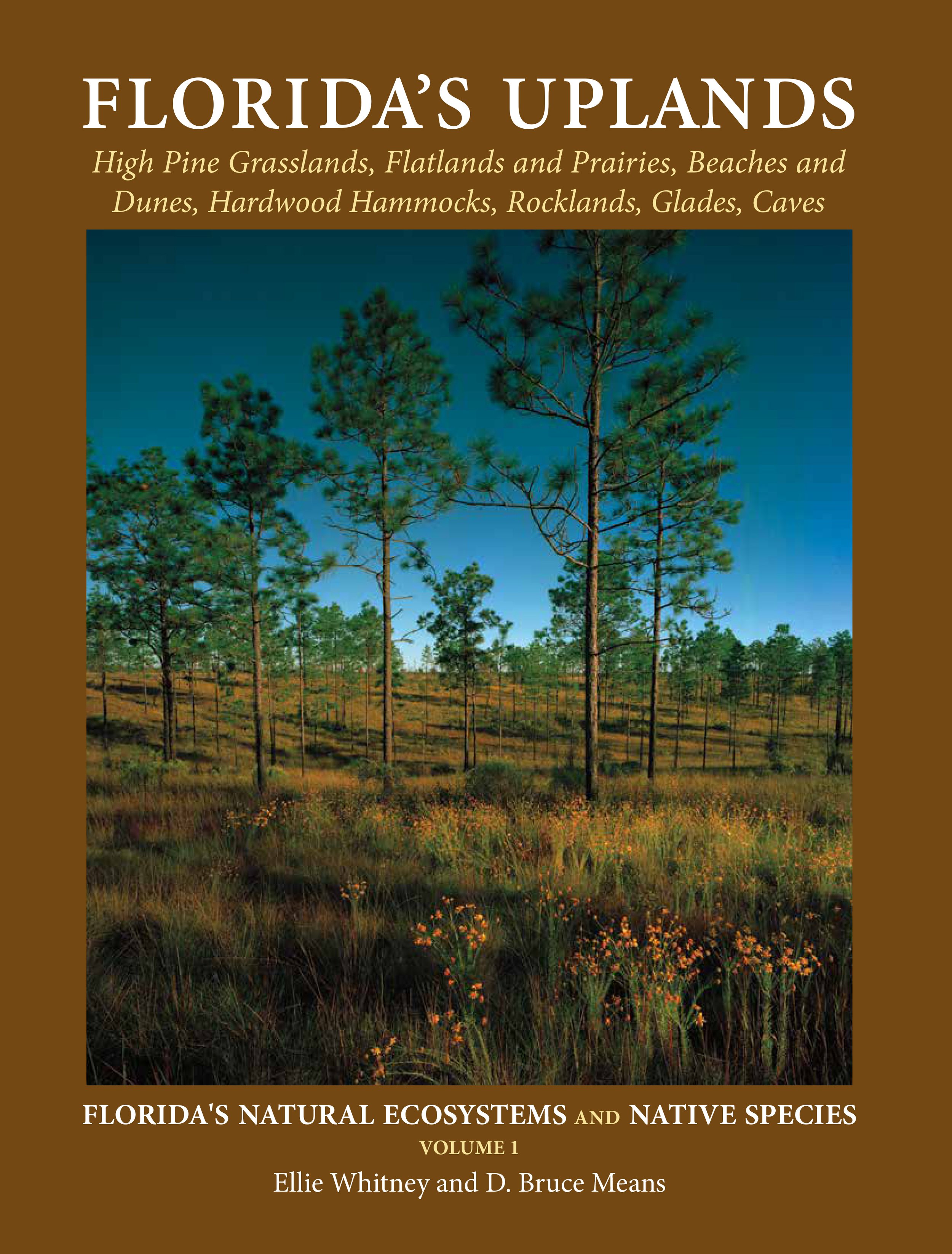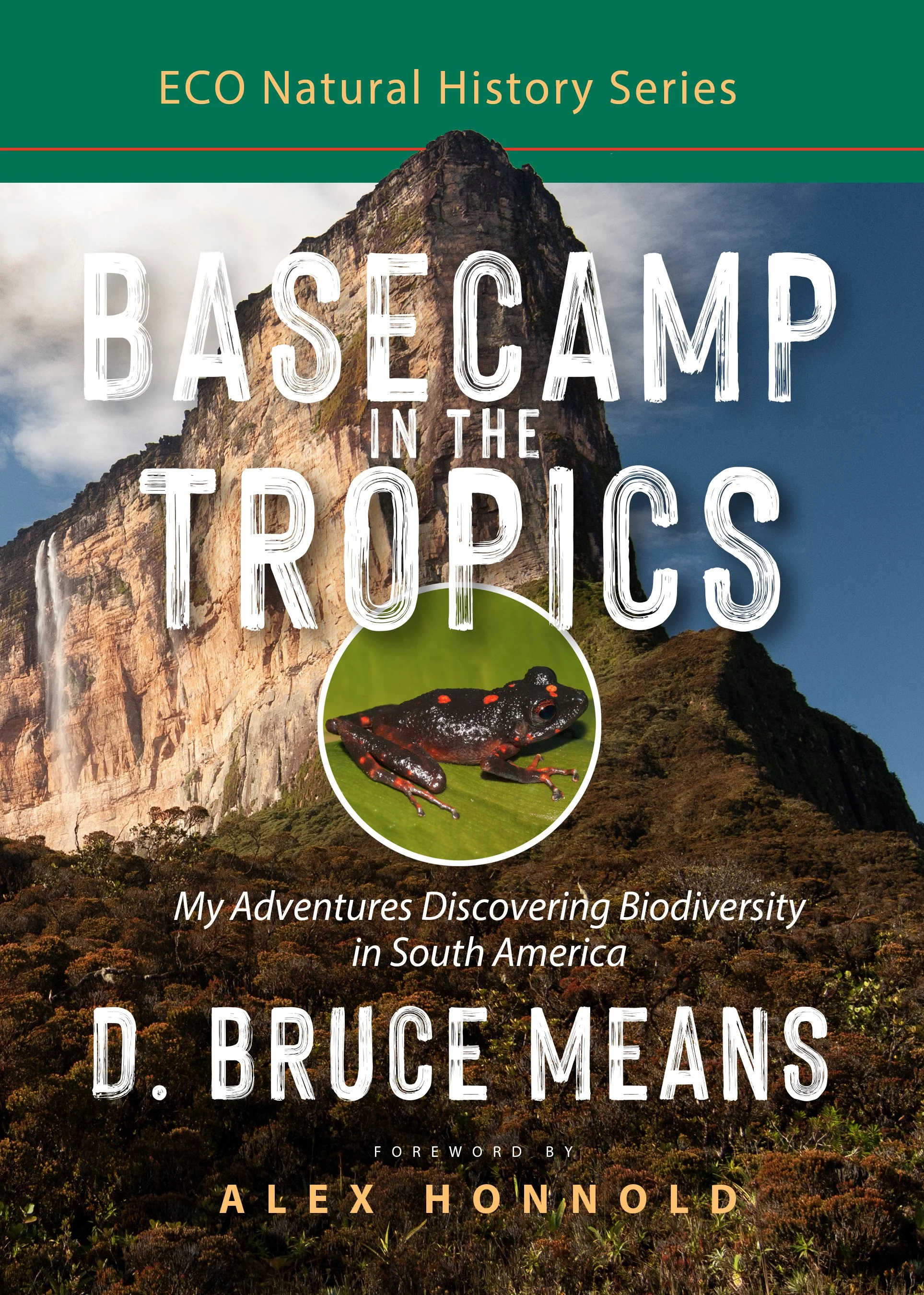
Books
Click on a title to purchase
Based on his more than 40 years of field research, Means reveals the biological complexity and exquisite beauty of animals that he has studied all over the world. Most people loathe these reptiles and amphibians, but Means paints stories of his love and admiration for creatures that go bump in the night.
Means is a world expert on the eastern diamondback rattlesnake, which he calls the “Gentle Ben” of venomous snakes, as it prefers to hide and not rattle.
A little further from his Florida Panhandle home, in Costa Rica, Means manages to find the rare and deadly bushmaster, but his adventure is further heightened by the eruption of a volcano—where his two young sons are hiking. In Australia, he searches for a breeding pair of "roughies," the rare rough-scaled python, as well as the "fiercey," reputed to be the world’s deadliest terrestrial snake. In Mexico, he stalks the rattlesnake that might have served as the model for the mythical “plumed serpent” of Maya shown with a tail with rattles.
Through his eyes and experiences, Means hopes that readers will gain a new appreciation for animals without fur or feathers—animals called herps, or creeping-crawling things.
Taken from the earlier book Priceless Florida (and modified for a stand-alone book), this volume discusses the fresh- and saltwater systems of Florida, including lakes and ponds; rivers and streams; springs; aquatic caves; estuarine waters and seafloors; submarine meadows, sponge, rock, and reef communities; and the Gulf and Atlantic Ocean. Introduces readers to the trees and plants, insects, mammals, reptiles, and other species that live in Florida's unique water ecosystems, including chicken turtle, barking treefrogs, osprey, herons, bass, crayfish, conchs, cordgrass, and railroad vine. Discusses the food chain and the interconnectedness of all species.
Breathtaking photos of Florida's beaches, dunes, coastal strand, and marshes.
Many years in the making, Florida's Magnificent Coast is a special visual journey through some of the most precious wild areas in the state, presenting the breathtaking beauty preserved in state lands, parks, and natural areas. World-famous nature photographer James Valentine has used his camera to record environmental art images of the state's remote wilderness places, spectacular sites too often missed by Florida's visitors and residents. Valentine also offers his poetic interpretations of the meaning of his images. Dr. D. Bruce Means, founder and president of the Coastal Plains Institute and Land Conservancy, has written the introduction and a scientific explanation of each photo.
Taken from the earlier book Priceless Florida (and modified for a stand-alone book), this volume discusses the well-drained areas of Florida, including high pine grasslands, flatwoods and prairies, interior scrub, hardwood hammocks, rocklands and caves, and beach dunes. Introduces readers to the trees and plants, insects, mammals, reptiles, and other species that live in Florida's unique uplands ecosystem.
Based on more than thirty years of observations and 20 years of formal study of the Eastern Diamondback Rattlesnake (Crotalus adamanteus), this book is the complete natural history of one of North America's most famous and characteristic animals. It covers every aspect of the life history and ecology of the fascinating eastern diamondback as discovered from long-term field studies conducted on Tall Timbers Research Station, Little St. Simons Island, and throughout the Coastal Plain range of the species.
Originally funded by a National Geographic Society research grant, this large on-going research project was additionally funded by Tall Timbers Research Station, Florida Game and Fresh Water Fish Commission, Coastal Plains Institute, private contributions, and personal funds.
Many years in the making, Florida Magnificent Wildernessis a special visual journey through some of the most precious wild areas in the state,presenting the breathtaking beauty preserved in state lands, parks, and natural areas. World-famous nature photographer James Valentine has used his camera to record environmental art images of the state’s remote wilderness places, spectacular sites too often missed by Florida’s visitors and residents. Valentine also offers his poetic interpretations of the meaning of his images. Dr. D. Bruce Means, founder and president of the Coastal Plains Institute and Land Conservancy, has written the main text, “Florida’s Rich Biodiversity.”
The book is divided into six sections, covering the wildlife and natural ecosystems of Florida, with the introduction to each written by a highly respected Florida writer and conservationist, including Al Burt, Manley Fuller, Steve Gatewood, D. Bruce Means, Victoria Tschinkel, and Bernie Yokel.
More breathtaking photos of Florida's uplands, forests, and prairies.
Many years in the making, Florida's Magnificent Land is a special visual journey through some of the most precious wild areas in the state, presenting the breathtaking beauty preserved in state lands, parks, and natural areas. World-famous nature photographer James Valentine has used his camera to record environmental art images of the state's remote wilderness places, spectacular sites too often missed by Florida's visitors and residents. Valentine also offers his poetic interpretations of the meaning of his images. Dr. D. Bruce Means, founder and president of the Coastal Plains Institute and Land Conservancy, has written the introduction and a scientific explanation of each photo.
“Basecamp in the Tropics” is Bruce Mean’s field notebooks from his expeditions into the jungles of South America, documented in the National Geographic film “The Last Tepui.”
With a foreword by famed climber Alex Honnold, "Basecamp” is a 280-page journal of science, discovery, discomfort, and determination with more than a hundred full-color photographs and graphics. With Means’ vivid narration, readers will find themselves traversing dangerous cliff faces in search of rare, undiscovered frogs, and will feel the droplets from tropical waterfalls through his raw, simple prose.
Some of the journeys detailed in the book covered ground that had never been explored by humans. And many of the species encountered during the multi trips were new to science.
Anyone with a sense of adventure or an appreciation for science will want to read “Basecamp,” available on newsstands in summer 2023. Visit ecouniverse.com to order or click the image above. Part of the ECO Natural History Series.
A real-life adventure story, told by an iconic scientist.
Priceless Florida presents the incomparable riches of every kind of natural ecosystem found within this unique region in a way that will appeal to young and old, laypersons and scientists. A cornucopia of colorful illustrations and exquisite photos makes you feel your there. The comprehensive text enlightens with facts and brims with intriguing curiosities while bridging multiple fields in a crisp, readable style that only seasoned science-educators like Drs. Whitney, Means, and Rudloe could offer. Much of Florida has been bought, but this book makes clear how its value truly has no price tag.
"Understanding our states unique environment is important for Floridians. An appreciation of the native ecosystems enables us to make wise decisions for the future. This guide is an excellent tool for discovering the natural treasures abundant in Priceless Florida." -- Senator Bob Graham
"For everyone with an interest in the natural history of Florida, or for that matter natural history in general, Priceless Florida is hard to put down. It combines the depth of an encyclopedia with the freshness and accessibility of a field manual." -- E.O. Wilson, author of Sociobiology, On Human Nature, and The Ants.
Taken from the earlier book Priceless Florida (and modified for a stand-alone book), this volume discusses Florida's wetlands, including interior wetlands, seepage wetlands, marshes, flowing-water swamps, beaches and marine marshes, and mangrove swamps. Introduces readers to the trees and plants, insects, mammals, reptiles, and other species that live in Florida's unique wetlands ecosystem, including the Virginia iris, American white waterlily, cypress, treefrogs, warblers, and the Florida black bear.
Taken from the earlier book Priceless Florida (and modified for a stand-alone book), this volume discusses the fresh- and saltwater systems of Florida, including lakes and ponds; rivers and streams; springs; aquatic caves; estuarine waters and seafloors; submarine meadows, sponge, rock, and reef communities; and the Gulf and Atlantic Ocean. Introduces readers to the trees and plants, insects, mammals, reptiles, and other species that live in Florida's unique water ecosystems, including chicken turtle, barking treefrogs, osprey, herons, bass, crayfish, conchs, cordgrass, and railroad vine. Discusses the food chain and the interconnectedness of all species.










